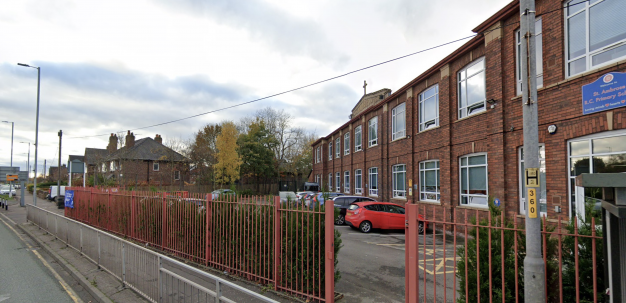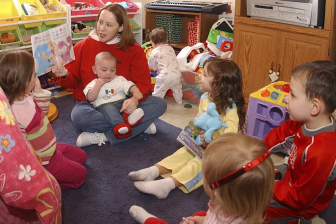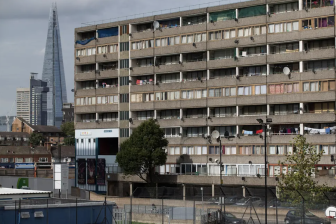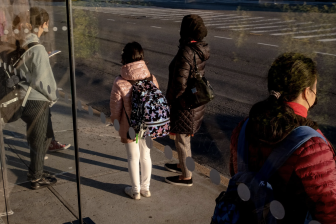
‘When the traffic is at its worst, you can smell and taste it’
Tall hedges and trees planted at a Manchester primary school located on one of Europe’s busiest roads are the latest weapon against dangerous traffic fumes.
The ‘Tredges’ – trees managed as hedges – were initially planted in four schools around the city which only have railings or mesh fencing between their playgrounds and busy main roads in some of the most polluted parts of the region.
Scientists at Lancaster University designed a programme to examine which plant species could best be used as a natural shield to reduce the health impacts of traffic-derived particulate pollution on primary school-age pupils.
One of those schools is St Ambrose Primary, which is located on the city’s Princess Parkway dual carriageway. It is one of Europe’s busiest roads, where air particle pollution levels exceed the limits set by the World Health Organisation. Particulate levels at the school have been found to be five times the WHO limit
Research led by Professor Barbara Maher at Lancaster University has demonstrated that these ‘tredges’ consisting of selected species can act as a natural filter, capturing substantial amounts of the particulate air pollution generated by passing traffic. The ‘Protecting Playgrounds’ project will test the use of instant tredges with different species, density and leaf shape, in a bid to identify the most effective green barrier for school boundaries.
Prof Maher, from the university’s Lancaster Environment Centre, said: “Traffic pollution is associated with delinquent behaviour in adolescents, and stunted brain development in children who attend highly polluted schools.
‘When the traffic is at its worst, you can actually smell and taste it’
“Young children are among the most vulnerable because their brains are still developing. Many schools are located close to major roads, so substantially reducing air pollution is necessary. Planting specific plant species that are good at capturing particulates along roads and around schools could help.”
At the height of the pandemic, while people remained at home, outdoor play was restricted and schools were play activity eventually increased because of reduced traffic and air pollution levels. But now that traffic levels have begun to rise again, so the choking fumes have returned.
“When the traffic is at its worst, you can actually smell and taste it. Our children have voices, but at the moment it’s the adults that are going to influence the changes,” the school’s headteacher told the BBC.
“Unfortunately, now as lockdowns are being lifted, we’ve got the traffic coming back. And we really don’t want it to return to the way it was because it’s choking us. If we could encourage some sort of hybrid working opportunities, where maybe two or maybe three days a week at home is encouraged, where possible, then that would make a seismic difference.
This is our children’s future and the air that they are breathing is not fit for purpose. Now’s the chance to really do something about it.
For now, the hope is the trees planted around the school gates and along the perimeter can have the desired effect.
Prof Maher said: “This project has the potential to deliver some of the most ground-breaking and important evidence delivered to date in recognising the importance and value that green infrastructure can play in terms of reducing airborne pollution. It could quite literally be a lifesaver for the children of Manchester and of this country.”
Air quality monitoring equipment has been installed at the participating schools and the trial is set to run into the autumn. Pollution levels will be monitored in both playgrounds and classrooms to observe what reduction in air pollution levels the hedges can achieve.
“Plants have to be carefully selected, and something like the Western Red Cedar, with all its little leaflets does a great job of capturing particles, depositing particles on the leaf surface so that they’re removed from the atmosphere. We can see here at St Ambrose, we have anything between a 30 per cent reduction and even greater 50 or 60 per cent reduction. At least until we can reduce our particulate emissions from traffic, they’ll do a job for us.”
Click here for a WHO factsheet on air pollutants, including particulates.




